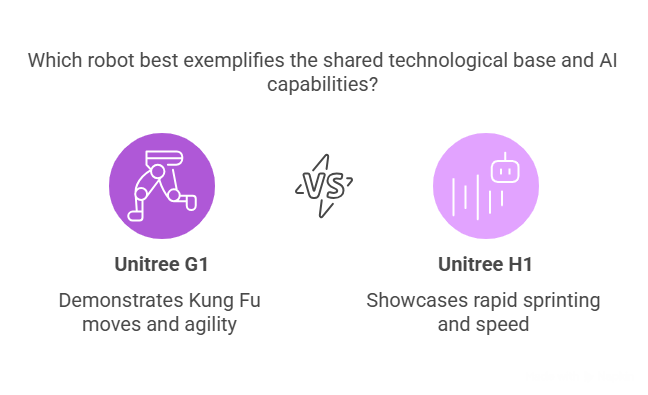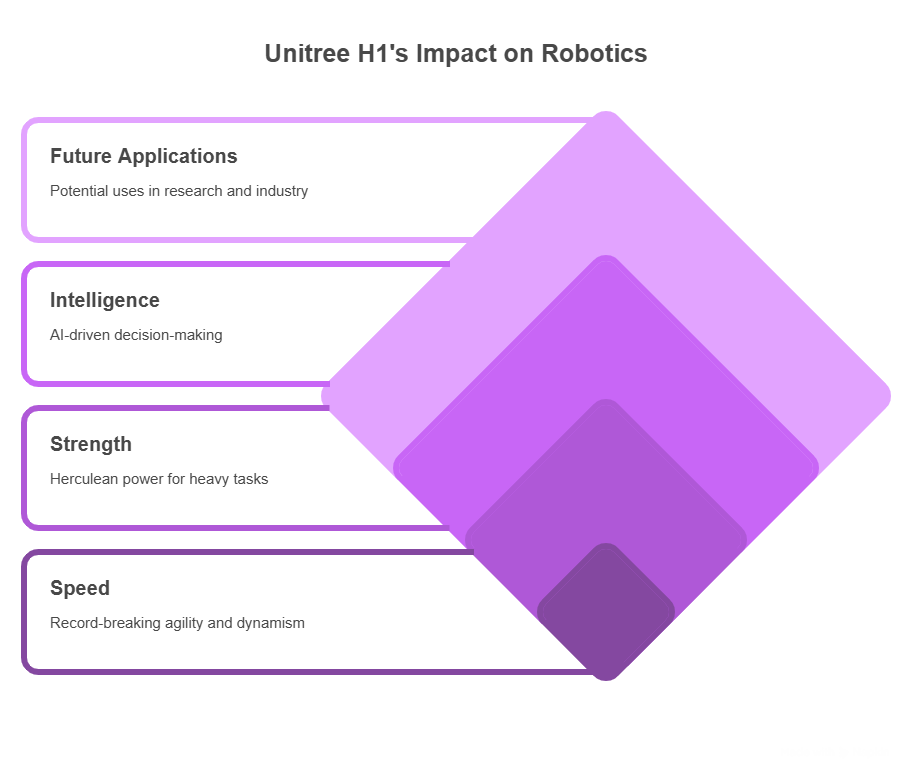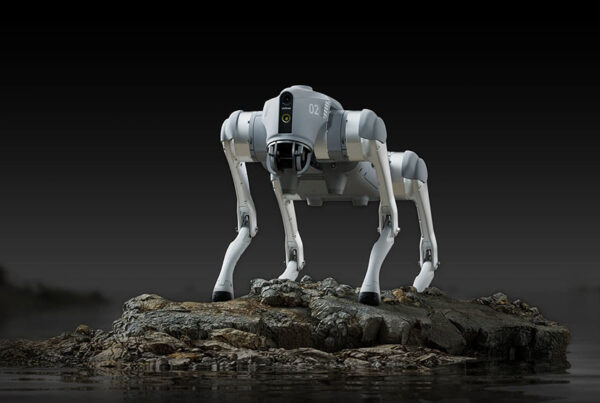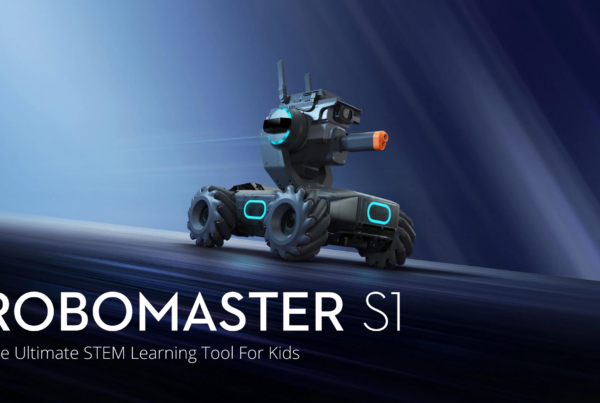
Unitree H1: Breaking Speed Barriers in Humanoid Robotics
Envision a humanoid robot racing past all others, acrobatically flipping like a gymnast, and taking industrial applications by storm like never before. Step into the, an engineering sensation that’s not only breaking barriers—it’s pulverizing them. With a world-record 3.3 meters per second speed and 189 N.m/kg torque density, the Unitree H1 is the world’s fastest humanoid robot, with a new standard for high-performance robots. So what sets this machine apart from being game-changing? Let’s examine its breakthrough design and why it’s first choice for pioneering research.
Unmatched Speed Like No Other
Clocking in at 3.3 m/s (approximately 7.4 mph), the Unitree H1 does not walk, it runs. Achieving this blazing speed, demonstrated in untethered open-air displays, the H1 is the fastest humanoid robot in the world. From navigating complex environments to performing dynamic actions like running or flipping, the H1’s high-torque joints (up to 360 N.m) give unparalleled power and precision. This is not just a machine; it’s a force of nature, designed to dominate the toughest environments with ease.
The H1’s unencumbered mobility—cable-free or powered by an external power source—gives it a real-world edge, making it well-suited for outdoor deployment, from search-and-rescue to logistics in hostile environments.
Built for Strength, Engineered for Durability
Standing at around 180 cm in height and 47 kg in weight, the H1 is a humanoid of full size with the capability to mimic human functionality. Additionally, its rugged build, powered by Unitree’s internal high-torque motors, enables it to carry out heavy-duty operations in industrial settings. For instance, from lifting payloads in manufacturing facilities to walking over rough terrain outdoors, the H1’s torque density (189 N.m/kg) delivers a strength-to-weight ratio that’s just unbeatable.
However, brute force isn’t the whole story. The H1’s force-position hybrid control also allows it to travel with dexterity, making it ideal for applications that require both strength and tact. In other words, picture it as a robot Hercules with a surgeon’s eye for precision—a combination that’s rewriting the automation playbook.
DNA shared with the G1: AI and Sensors That See the World
Even if the H1 is a monster in its own right, it leverages the technological base common to its sibling, the Unitree G1. Both the robots are endowed with 3D LiDAR and depth cameras, giving them 360° spatial awareness to facilitate free movement. While they are sidestepping barriers or surveying complex environments, these sensors pilot the H1 to move with intelligence and wit.

At the heart of every robot lies Unitree’s AI-powered motion algorithms, with autonomous task performance and real-time learning. From the G1‘s Kung Fu moves to the H1‘s rapid sprinting, the shared AI architecture allows both robots to learn from new challenges. And since Unitree is an open-source philosophy, developers around the globe can create these algorithms, meaning that the H1 is a platform for endless innovation.
Ready to see the future of robotics? More of the Unitree H1 and be a part of the revolution!
The Future Arrives—And It’s Speeding
The Unitree H1 isn’t just a robot; it’s a glimpse into a future where humanoids run, flip, and work alongside us. With its record-breaking speed, Herculean strength, and AI-driven intelligence, it’s redefining what’s possible in robotics. Whether you’re a researcher dreaming of the next breakthrough or an industry leader seeking automation solutions, the H1 is your ticket to the cutting edge.
So, what’s in store next? With Unitree breaking boundaries, the H1 is only the start. Leave your answer in the comments—how would you use the world’s fastest humanoid robot?






